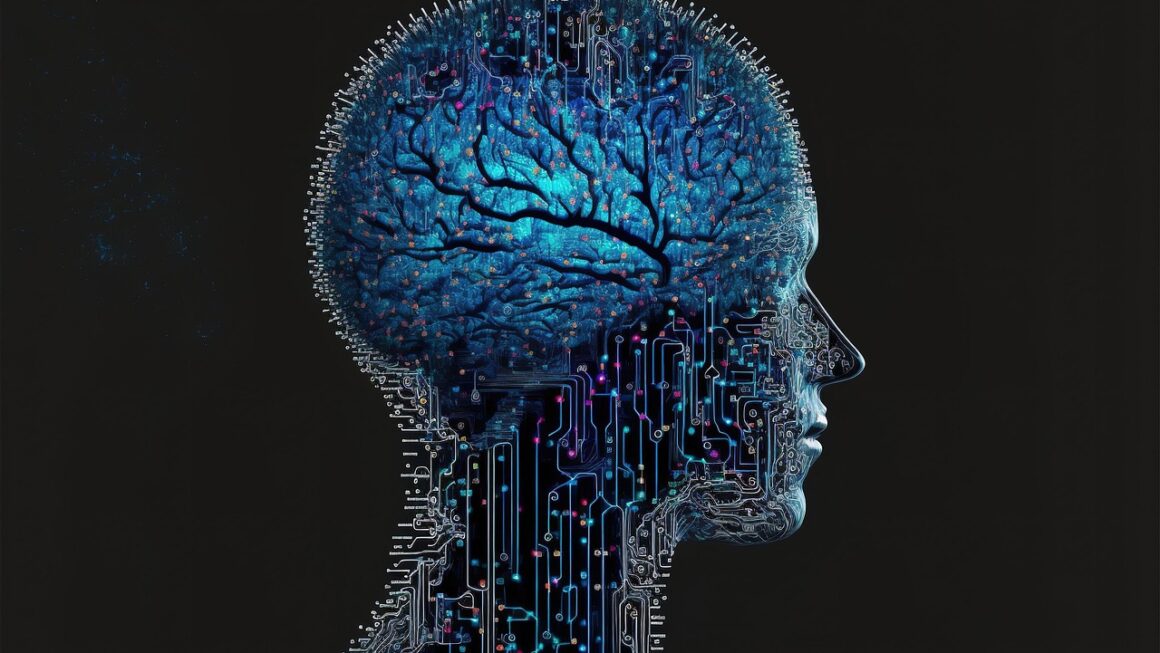The metaverse, once a futuristic concept relegated to science fiction, is rapidly transforming into a tangible reality. It’s more than just virtual reality or augmented reality; it’s a persistent, shared, 3D virtual world, or collection of interconnected virtual worlds, where users can interact with each other, digital objects, and even the real world in entirely new ways. From gaming and entertainment to business and education, the metaverse is poised to disrupt industries and redefine how we live, work, and connect. Understanding the metaverse is no longer optional; it’s becoming increasingly crucial for individuals and businesses alike.
What is the Metaverse?
Defining the Metaverse
The metaverse, at its core, is a digital universe that blends physical and virtual realities. Think of it as the next iteration of the internet, a more immersive and interactive experience than the web we know today. It’s characterized by:
- Immersion: Feeling present within the digital environment.
- Interactivity: Engaging with the environment and other users in real-time.
- Persistence: The world continues to exist and evolve even when you’re not actively participating.
- Social Presence: Feeling like you’re interacting with real people in a shared space.
- Decentralization (often): Many metaverse platforms are built on blockchain technology, promoting user ownership and control.
Key Components of a Metaverse
Understanding the fundamental components will help you grasp the complexity and potential of the metaverse:
- Virtual Reality (VR): VR headsets provide immersive experiences, blocking out the real world and placing users in a fully digital environment.
- Augmented Reality (AR): AR overlays digital information onto the real world, enhancing our perception and interaction with our surroundings. Think of Pokemon Go or Snapchat filters.
- Blockchain Technology: Enables secure digital ownership, verifiable transactions, and decentralized governance. This is critical for creating digital economies within the metaverse.
- Digital Avatars: Users represent themselves with customizable digital avatars, allowing for self-expression and identity within the metaverse.
- Persistent Virtual Worlds: These are digital environments that exist continuously, evolving and changing even when users are offline.
- Cryptocurrencies and NFTs: Used for transactions, trading virtual assets, and owning digital real estate within the metaverse.
The Difference Between Metaverse and the Internet
While the internet is a vast network of information and services accessed through websites and apps, the metaverse aims to be a more immersive and interconnected digital world.
- Internet: Primarily focused on accessing and consuming information.
- Metaverse: Focuses on creating and participating in shared experiences within a 3D environment.
- Example: Instead of browsing a website to buy a new outfit, in the metaverse, you could visit a virtual store, try on clothes with your avatar, and even see how it looks on your avatar in a virtual setting.
Why is the Metaverse Important?
Transforming Communication and Collaboration
The metaverse offers a more engaging and interactive way to communicate and collaborate, especially beneficial for remote teams.
- Virtual Meetings: Move beyond video conferencing and participate in collaborative projects in a shared virtual workspace. Imagine brainstorming ideas on a virtual whiteboard together with your team, regardless of their physical location.
- Training and Education: Simulate real-world scenarios for training purposes, providing hands-on experience in a safe and controlled environment. A medical student could practice surgery on a virtual patient, or a pilot could experience flight simulations in various weather conditions.
- Enhanced Social Interactions: Connect with friends and family in immersive virtual environments, playing games, attending virtual concerts, or simply hanging out in shared spaces.
New Opportunities for Commerce and Entertainment
The metaverse is creating entirely new markets and revenue streams.
- Virtual Real Estate: Buying, selling, and developing virtual land is becoming increasingly popular, offering opportunities for creating virtual businesses and experiences. Platforms like Decentraland and The Sandbox are leading the charge.
- Digital Assets and NFTs: Trading virtual goods, artwork, and collectibles as NFTs is gaining traction, offering creators new ways to monetize their work. For example, a digital artist could sell unique virtual sculptures as NFTs in the metaverse.
- Immersive Entertainment: Experience concerts, movies, and games in entirely new ways, with greater levels of interactivity and immersion. Imagine attending a virtual concert where you can interact with the performers and other audience members in real-time.
- Virtual Advertising: Brands can reach new audiences and engage with customers in innovative ways through virtual advertising and experiences. Nike’s Nikeland in Roblox is a prime example of how brands are leveraging the metaverse.
Expanding Learning and Creativity
The metaverse provides powerful tools for expanding learning and fostering creativity.
- Interactive Learning Environments: Engage with educational content in a more immersive and interactive way, making learning more engaging and effective. Students can explore ancient civilizations in a virtual museum or conduct virtual science experiments.
- Creative Expression: Users can create and share their own virtual content, from artwork and music to games and experiences, fostering creativity and innovation. Platforms like Roblox allow users to build and share their own games and experiences with others.
- Accessibility: The metaverse can provide accessible learning environments for individuals with disabilities, offering alternative ways to engage with educational content.
Examples of Metaverse Platforms
Popular Metaverse Platforms
Here are some examples of metaverse platforms already making waves:
- Decentraland: A decentralized virtual world where users can buy, sell, and develop virtual land, create experiences, and trade NFTs. Users own their virtual assets and can participate in governance decisions.
- The Sandbox: Another decentralized virtual world focused on user-generated content and gaming experiences. Users can create and monetize their own games and assets using the platform’s tools.
- Roblox: A popular gaming platform where users can create and play a wide variety of games created by other users. It’s a prime example of a metaverse-like environment with a thriving economy.
- Meta Horizon Worlds: Meta’s social VR platform where users can create and explore virtual worlds, attend events, and connect with others. Requires a Meta Quest VR headset.
- Microsoft Mesh: Microsoft’s metaverse platform designed for enterprise collaboration, allowing remote teams to work together in shared virtual spaces.
Business Applications in the Metaverse
Beyond entertainment, businesses are exploring diverse applications within the metaverse:
- Virtual Offices: Remote teams can collaborate in shared virtual workspaces, fostering a sense of community and improving productivity.
- Product Demonstrations: Showcase products in immersive virtual environments, allowing customers to interact with them in a more engaging way. A car manufacturer could offer virtual test drives of its vehicles in the metaverse.
- Virtual Events and Conferences: Host virtual events and conferences that offer more engaging and interactive experiences than traditional webinars. Attendees can network with each other in virtual spaces, attend presentations, and participate in virtual workshops.
- Training Simulations: Provide realistic training simulations for employees in various industries, such as healthcare, manufacturing, and construction.
Challenges and Future of the Metaverse
Potential Challenges
While the metaverse holds immense potential, it’s important to acknowledge the challenges:
- Accessibility and Affordability: VR and AR technology can be expensive, limiting access for many users.
- Privacy and Security: Protecting user data and preventing malicious activities in virtual environments is crucial.
- Digital Divide: Ensuring equitable access to technology and digital literacy is essential to prevent further marginalization.
- Regulatory Frameworks: Developing appropriate regulatory frameworks for virtual economies and digital ownership is necessary.
- Health and Safety: Concerns exist regarding motion sickness, eye strain, and the potential for addiction.
The Future of the Metaverse
The future of the metaverse is promising, with continued advancements in technology and wider adoption across industries.
- Increased Interoperability: The ability to seamlessly move between different metaverse platforms and transfer digital assets.
- Advanced AI and Avatars: More realistic and intelligent avatars that can interact with users in a natural and intuitive way.
- Integration with the Real World: Blending the physical and virtual worlds more seamlessly, with AR technologies playing a key role.
- Decentralization and User Ownership: Empowering users with greater control over their data and digital assets.
Conclusion
The metaverse is rapidly evolving from a futuristic concept to a tangible reality with the potential to reshape how we live, work, and interact with the world around us. While challenges remain, the opportunities for innovation, creativity, and economic growth are immense. Understanding the metaverse, its components, and its potential applications is crucial for individuals and businesses alike. Staying informed about the latest developments and exploring the possibilities offered by this emerging technology will be essential for navigating the future of the digital world. As the metaverse continues to develop, we can expect to see even more transformative applications across various industries, impacting everything from entertainment and communication to education and commerce. Embrace the learning curve, explore different platforms, and be prepared to witness the evolution of the internet into a more immersive and interconnected digital universe.




